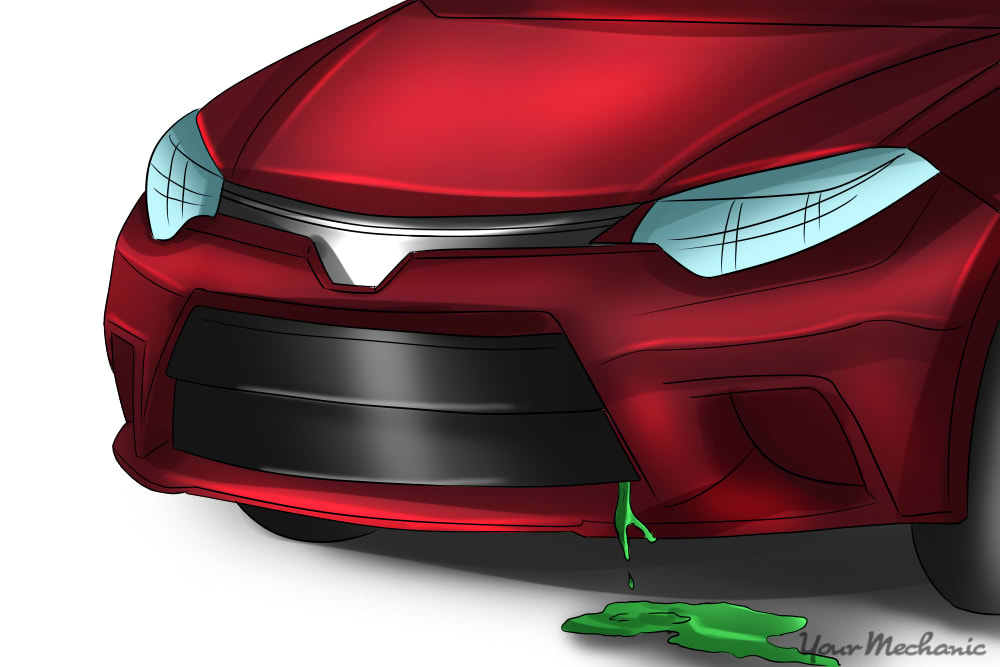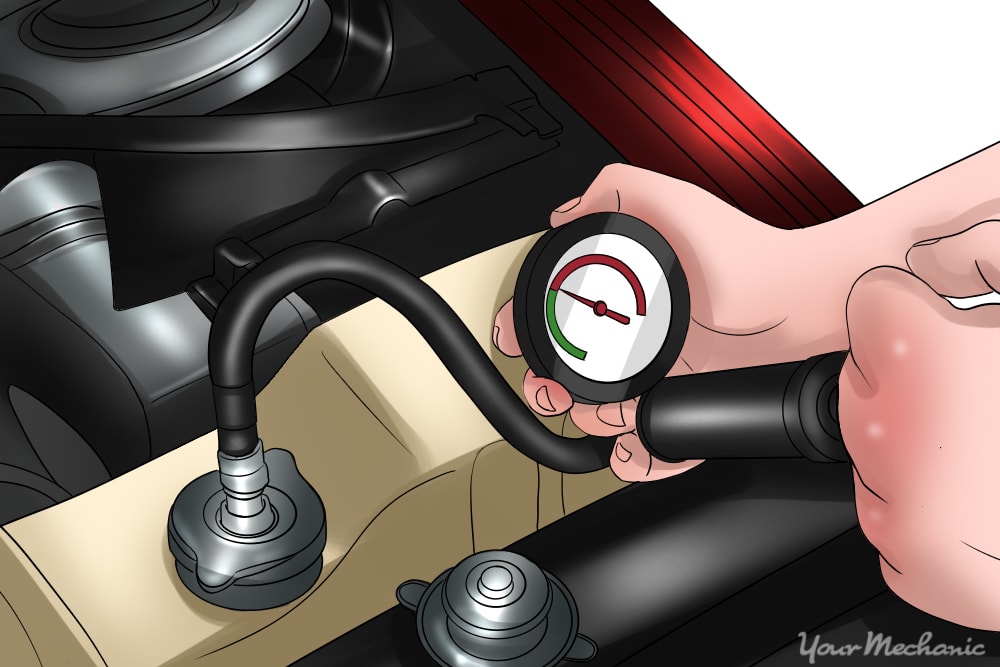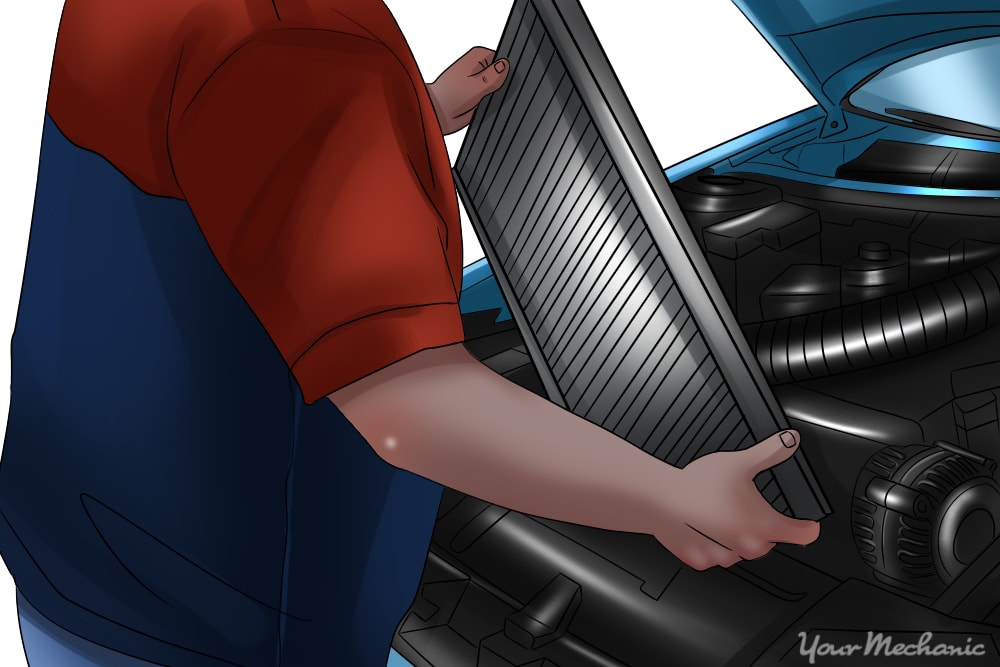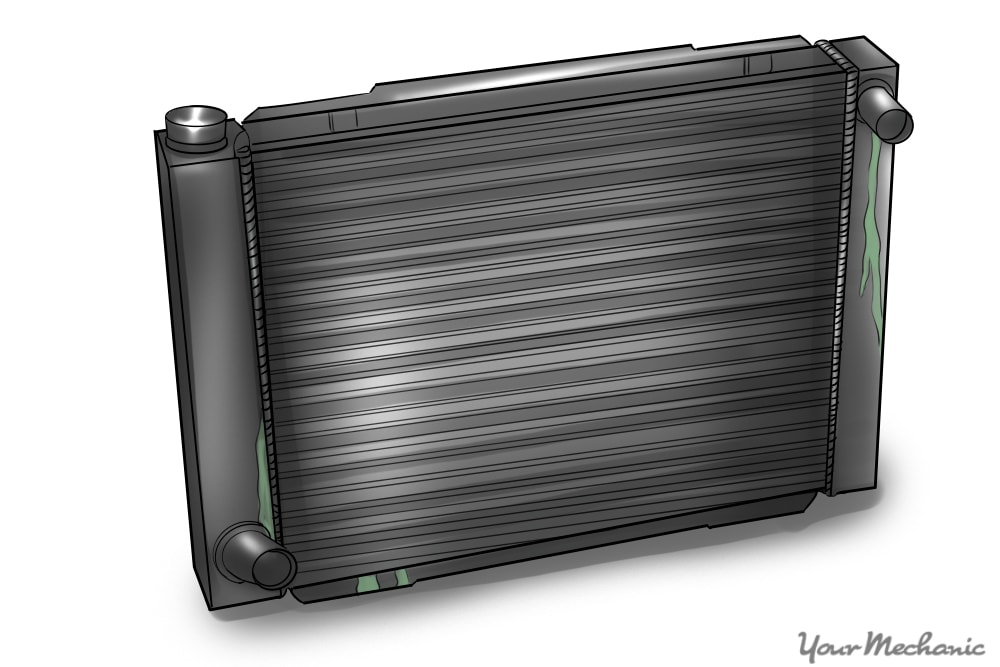

The radiator is the start of your car’s cooling system. Coolant from the engine travels through tubes in the radiator. These tubes are surrounded by fins designed to direct airflow. The air cools the coolant, which then travels back to the engine, allowing it to run at the proper temperature.
Radiators can develop leaks in several places. These include the hoses, seams, tubes and cores. Without a properly functioning radiator, your engine will quickly overheat. This is something you want to avoid at all costs since overheating can cause extensive engine damage.
The best way to fix a leaking radiator is to replace it. However, there are ways to temporarily fix a leaking radiator until you can get it into a shop for repair. These strategies come in handy during emergency situations.
Part 1 of 2: Locate the leak
Materials Needed
In order to safely inspect and seal the radiator, you need a couple of basic tools:
- Cooling system pressure tester (optional)
- Commercial radiator stop leak (optional)
- Eggs (optional)
- Pepper (optional)
- Protective gloves
- Rags
- Safety glasses
- Welding or soldering equipment (optional)
Step 1: Locate the leak. Before you do anything else, make an attempt to locate the leak.
There are many places coolant leaks from, so you want to make sure it is actually coming from the radiator.
Step 2: Use a pressure tester. If you can’t easily spot the leak, you can use a pressure tester on the system.
This tool pressurises the system without the engine running, making leaks easy to spot. To use the pressure tester, attach it to the radiator or reservoir using the appropriate adapter, pumping it up to 15 PSI, which should then reveal the leak.
- Warning: Do not exceed this pressure or damage to the cooling system may occur. Pressure testers can be rented from most auto parts stores.
Part 2 of 2: Fix the leak
Step 1: Fix the leak. Once you have found the leak, you should determine the best way to fix it.
There are a several ways to temporarily do this. These include adding a bottle of cooling system sealer, an egg, black pepper or epoxy glue. In some cases, the radiator can also be soldered or welded.
The table below will give you a better sense of how each of these methods works:
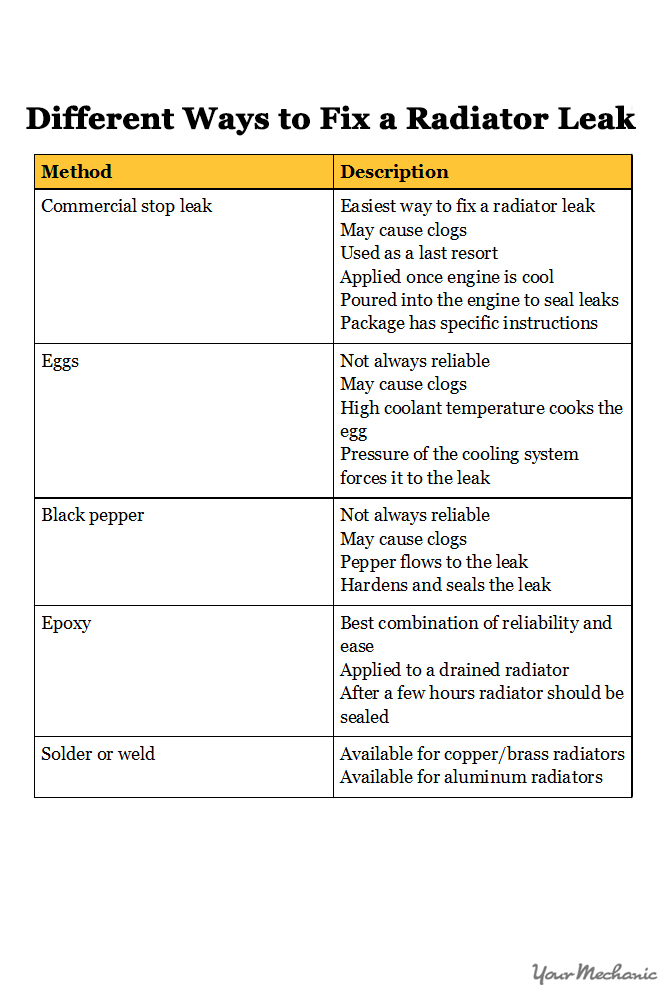
- Tip: If you are able to welder or solder, replacing the whole radiator may be the way to go
Step 2: Get your vehicle to a trained professional. Sometimes the best course of action is to have a professional examine it.
Many repairs to a leaking radiator are temporary fixes. The only permanent and safe repair is radiator replacement by a trained professional. If you added some form of stop leak to your cooling system, don’t forget to tell your technician. One of YourMechanic’s certified professionals will gladly come to your home or work to perform an installation of a new radiator.



